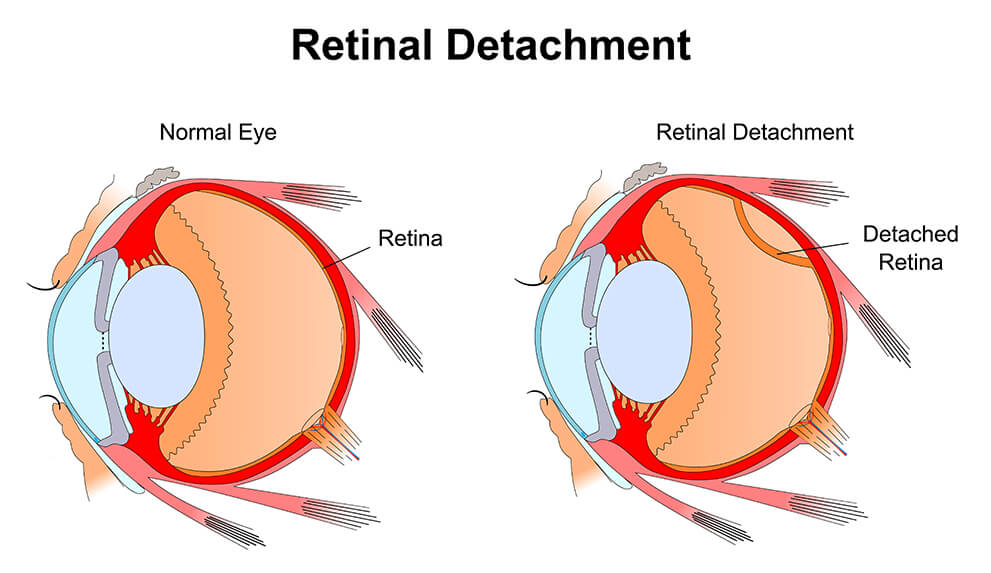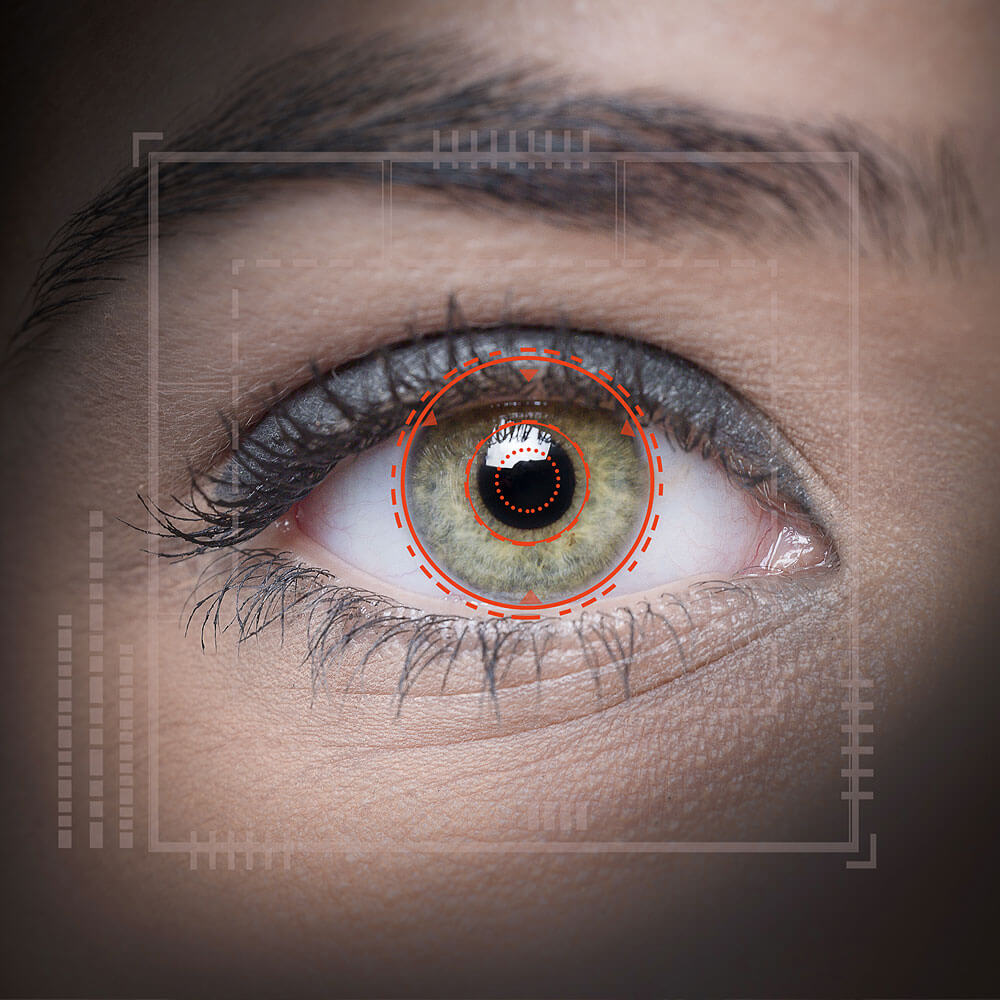How Does a Retina Become Detached?
A retinal detachment occurs if the retina is pulled back from the eye. This can be either partially or completely. If this occurs, it cuts the retina off from its blood supply.

This can happen one of three ways:
Rhegmatogenous retinal detachment:
This is the most common form of detachment. It occurs when there’s a tear in the retina and fluid passes through the opening.
When the fluid builds up under the retina, the retina is pushed up off the back of the eye. The retina may tear for several reasons.
The most common reason is a result of aging. If it is because of aging, the vitreous separates from the retina and pulls on it. This causes the retina to rip.
Tractional retinal detachment:
This kind of detachment happens when scar tissue forms on the retina. This is often as a result of abnormal blood vessel growth and leakage.
The scar tissue pulls the retina from the back of the eye. This happens more frequently in individuals with diabetic retinopathy. Diabetic retinopathy often causes abnormal blood vessel growth.
Exudative retinal detachment:
An exudative detachment happens also as the result of abnormal blood vessel growth. The retina detaches because of fluid from leaking blood cells.
The fluid builds up under the retina and raises it from the back of the eye. This is the least common form of retinal detachment.
Exudative retinal detachment often occurs with a large amount of blood vessel leakage.
What Causes Retinal Detachment?
There are a few things that put you at higher risk of having a retinal detachment. These factors include:
- Advanced age
- Being very near-sighted
- Having a family history of retinal detachment
- Previous retinal detachments or tears
- Traumatic eye injuries
- Previous eye surgery
Those who are high-risk should be aware of the symptoms of retinal detachment. Retinal detachment is often considered a medical emergency. Without immediate treatment, it can cause irreversible damage and vision loss.
How Do You Know if Your Retina is Detached?
The symptoms of retinal detachment include:
- The sudden appearance of many floaters
- Flashing lights
- Sudden loss of peripheral vision
- Progressive loss of peripheral vision that moves towards central vision

If you experience these symptoms, see an eye professional as soon as possible. If severe, have a friend or family member take you to the emergency room.
If the doctor suspects a retinal detachment, you will be referred to a visual specialist. There, they can make an immediate diagnosis and start treatment.
How Is Retinal Detachment Treated?
There are several methods used to treat a retinal detachment:
Vitrectomy:
A vitrectomy involves having the vitreous removed from the eye. This drains from the fuild under the retina from a rhegmatogenous detachment.
Once that fluid is drained, you can have the tear in the retina repaired with surgery.
Scleral Buckling:
Scleral buckling repairs a retinal tear by putting a band around the outside of the eye. This puts pressure on it to close off the tear.
The tear is then treated surgically with extreme freezing, also known as cryopexy, or by sealing it off with a laser.
Pneumatic retinopexy:
Another method to reattach the retina is pneumatic retinopexy. First, the doctor injects a small gas bubble into the eye.
They then have the patient adjust their head to move the bubble into place over the tear. This is often performed as an in-office procedure.
After the retina is successfully reattached, a laser or cryopexy may be also used to seal the tear. This leads to permanent reattachment.
Have questions about retinal attachment or how the retina works?
Schedule an appointment with the experts at Vitreo-Retinal Consultants in Wichita, KS!





